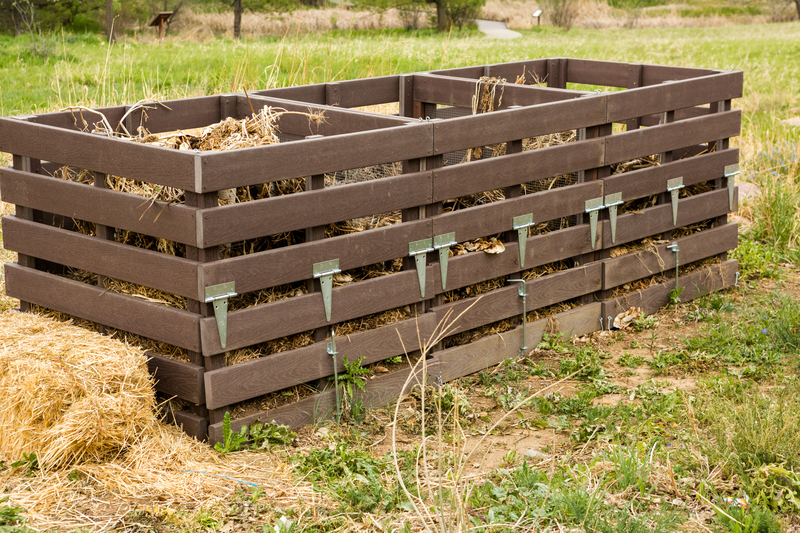Creative Ways to Minimize PPE Waste and Dispose of It Responsibly
The surge in Personal Protective Equipment (PPE) use since the COVID-19 pandemic has led to a significant environmental challenge: PPE waste management. Face masks, gloves, gowns, and face shields have become crucial for health and safety, but often end up in overflowing landfills or, worse, polluting the natural environment. To safeguard our planet while ensuring public health, it's vital to discover innovative ways to minimize PPE waste and practice responsible PPE disposal.

Understanding the Environmental Impact of PPE Waste
Disposable PPE is typically made from plastics such as polypropylene, polyethylene, and latex, materials that do not biodegrade quickly. As a result, discarded items contribute to the growing plastic pollution problem, threatening wildlife, clogging waterways, and entering food chains as microplastics. According to recent reports, billion of face masks and gloves are discarded monthly worldwide--a staggering number that calls for urgent action.
Why We Need to Minimize and Responsibly Dispose of PPE Waste
Not only does excessive PPE waste endanger habitats and human health, but improper disposal can also spread infectious diseases. This makes safe, creative, and sustainable solutions essential for both environmental and public well-being.
Creative Strategies for Reducing PPE Waste
1. Embracing the Use of Reusable PPE
- Switch to Reusable Masks: Opt for cloth or washable masks whenever appropriate without compromising safety. With proper laundering, these masks significantly cut down on disposable mask waste.
- Reusable Gowns and Face Shields: In healthcare and industrial settings, explore reusable, sterilizable alternatives to single-use gowns and shields.
Emphasizing reusables not only minimizes PPE waste but also helps organizations and individuals save money in the long run.
2. Innovative PPE Recycling Initiatives
- PPE Collection Points: Encourage schools, hospitals, offices, and communities to establish PPE recycling bins for masks, gloves, and shields. Partner with certified hazardous waste recyclers for safe processing.
- Specialized Recycling Programs: Support companies and nonprofit organizations that develop and operate mask and glove recycling schemes. For instance, some programs convert used PPE into plastic lumber for benches or construction material.
- TerraCycle and Similar Initiatives: Participate in global recycling platforms like TerraCycle that accept otherwise non-recyclable PPE for upcycling or energy recovery projects.
*By promoting PPE recycling, communities can reduce their environmental footprint and inspire creative uses for what was once considered waste.*
3. Creative Upcycling and Repurposing of PPE
- Art Installations: Some artists creatively repurpose used PPE into awareness-raising sculptures or art pieces, highlighting the pandemic's environmental toll while preventing waste from entering landfills.
- Community Projects: Masks and gloves, after appropriate disinfection, can sometimes be repurposed for non-medical applications such as gardening ties, insulation, or craft materials for educational projects.
These upcycling efforts underline the importance of finding new life for PPE materials beyond their original purpose.
4. Reducing Single-Use Packaging and Accessories
- Bulk Distribution: Distribute PPE items in bulk to minimize excess packaging waste.
- Biodegradable Packaging: Encourage manufacturers to switch to biodegradable or recyclable materials for packaging PPE.
Addressing not just PPE items, but also the packaging they come in, strengthens overall waste reduction strategies.
5. Promoting Responsible PPE Disposal Education
- Clear Guidelines: Display posters and create digital campaigns explaining how and where to responsibly dispose of different types of PPE.
- Proper Litter Collection: Community cleanups and public awareness campaigns can prevent discarded PPE from polluting streets, parks, and waterways.
Educating citizens amplifies responsible practices and ensures PPE is less likely to be carelessly thrown away.
6. Encouraging Product Innovations in PPE Design
- Biodegradable and Compostable PPE: Support research and consumer demand for masks, gloves, and gowns made from plant-based or compostable materials.
- Modular, Repairable PPE: Encourage the design of PPE with replaceable, reusable components to reduce the need for complete replacement.
These forward-thinking product innovations offer hope for a more sustainable PPE lifecycle.
Best Practices for Safe and Responsible PPE Disposal
1. At-Home PPE Disposal Tips
- Place used PPE in a dedicated, lined trash container.
- If potentially contaminated (e.g., from someone with a respiratory illness), double-bag the waste and tie it securely.
- Wash hands immediately after handling used PPE.
- Never flush masks or gloves down toilets--they clog plumbing and pollute waterways.
2. Workplace and Healthcare Facility PPE Waste Actions
- Provide color-coded bins to separate PPE waste from regular trash and recyclables.
- Label all PPE disposal containers clearly.
- Ensure that PPE waste is regularly collected and sent to certified hazardous waste facilities, where it can be autoclaved (sterilized) before landfill disposal or recycling.
3. Community-Level PPE Waste Solutions
- Organize PPE waste drives and safe drop-off sites for mass collection and recycling.
- Collaborate with local authorities and environmental NGOs to monitor litter hotspots and arrange special clean-up days.
Policy and Corporate Approaches to Responsible PPE Disposal
1. Government Regulations and Incentives
- Implement extended producer responsibility (EPR), requiring manufacturers to manage PPE waste collection and treatment.
- Create incentives for companies that pioneer eco-friendly PPE options or sponsor local recycling programs.
2. Business Initiatives for Minimizing PPE Waste
- Green procurement policies that favor suppliers with sustainable PPE solutions.
- Workplace training to reduce misuse and unnecessary consumption of single-use PPE.
- Partner with innovative recycling companies to offer drop-off bins at offices and retail stores.
Global Projects and Success Stories in PPE Waste Reduction
- The PPE Plastic Road Project: In India, used PPE has been successfully processed and integrated into road construction, providing durable surfaces while reducing landfill waste.
- PPE-to-Fuel Plants: Pilot programs in the UK and Europe are transforming disposable masks and gloves into useful fuels through advanced thermal recycling.
- Hospital Recycling Partnerships: Health systems in Australia and Canada are collaborating with recycling firms to safely process disposable masks, turning them into raw materials for other products.
Tips for Individuals: How to Minimize Your PPE Environmental Impact
- Carefully assess when PPE is necessary--for example, using cloth masks for everyday errands if local guidelines and risk levels allow.
- Store reusable PPE in clean personal carriers, and wash/disinfect regularly according to manufacturer instructions.
- Dispose of unusable PPE using community collection points if available.
- Talk to friends, neighbors, and coworkers about the importance of responsible PPE use and disposal.

Frequently Asked Questions About PPE Waste
Can disposable masks and gloves be recycled in regular curbside programs?
Most regular recycling facilities cannot process PPE due to contamination and material complexity. Look for specialized PPE recycling programs or community collection points.
Are there compostable PPE options available?
Some manufacturers now produce compostable masks and gloves, but check for third-party certifications and local composting capabilities before disposal.
Why is it dangerous to throw PPE in public areas or waterways?
Discarded PPE can spread disease, entangle wildlife, and break down into microplastics, harming ecosystems for years to come.
Conclusion: Our Role in Responsible PPE Waste Management
As we continue to navigate health challenges, it is crucial to balance the benefits of PPE with sustainable waste management solutions. By embracing creative approaches to minimize PPE waste--such as adopting reusables, supporting innovative recycling, and participating in public awareness efforts--we can protect both public health and the environment.
Let us all take responsibility. Whether you're an individual, organization, or policymaker, your choices make a difference. By taking actionable steps today, we move closer to a cleaner, healthier, and more sustainable future with responsible PPE disposal and minimal waste.
If you found this guide on minimizing and disposing of PPE waste responsibly helpful, share it with your community and be the change you wish to see!
```